Prem. P Ghimire
YABADU NEPAL TRAVEL & TOUR
Lakeside Hallanchowk near by hotel Hyatt Pokhara
In front of blue sky paragliding
Ph 00977-61-
Mob 00977-
Email- (lastloveprem@mail.com)
About Népal (www.ghimireprem.blogspot.com)
Travel Information
The land of Mt. Everest, Nepal, a tiny Himalayan country sandwiched between Tibet and India, is a country of contrasts. It is crowned by majestic peak's of the Himalayan's to the north, crossed by green valleys rich of tea gardens in the middle and bordered by dense tropical jungles to the south. It is also a diverse mix of races and religious, Hinduism and Buddhism both have in Nepal their most sacred and ancient temples and shamanic healing is still widely practiced. Our classic tours combine these diverse elements to enable the traveler to have a tested of the various aspects of this extraordinary country. Besides this, if one is more interested in sport or adventure, there are many possibilities such as: Trek and expeditions of various difficulty and duration. Rafting on different grade rivers, paragliding, a fascination sport that is immensely popular in Nepal due to its panoramic views. Horse riding, camping in the jungles of our national parks, Bicycle tours on mountain track and more...
• Area: 147,181 sq. km
• Geography: Situated between China in the north and India in the South.
• Capital: Katmandu
• Population: 25 Million
• Language: Nepali is the national language. However, travel-trade people understand and speak English as well.
• Time: Nepal time is 5 Hours 45 Minutes ahead of GMT
• Currency: Nepalese Rupee (approximately US$ 1 equals RS. 74.65).
• Political System: Multi-party Democracy with constitutional monarchy
• Religion: Nepal enjoys the distinction of being the only Hindu Kingdom in the world. However, there is a harmonious blending of Hinduism and Buddhism.
• Climate: Nepal has six seasons but four major seasons are:
(1) winter: December-February,
(2) Spring: March-May,
(3) summer: June-August,
(4) autumn: September-November.
• People: Nepal has more than 61 ethnic groups and 70 spoken languages.
• Vegetation: Nepal possesses some of the most outstanding bio-diversity in the world, ranging from sub-tropical Rain forests to Alpine deserts.
• Monsoon: Mostly rains at night, making the following days crispy clean and fresh. Most of the northern belt of the Trans-Himalayan Zones is rain-shadowed and ideal for trekking.
• National Bird: Impean Pheasant (Danfe)
• National Flower: Rhododendron- Arboreum (Lali Gurans)
• World Heritage sites (cultural):
o Swayambhu
o Bouddha
o Bhaktapur
o Chagunarayan
o Pashupatinath
o Kathmandu Durbar Square
o Patan Durbar Square
The ways to enter Nepal
By Air:
Direct flights from Doha, Osaka, Shanghai, Bangkok, Singapore, Hongkong, Karachi, Delhi, Calcutta, Paro, Dhaka, Lhasa, Varanasi.
By land:
All visitors entering Nepal by land must use no other than
(1) Kakarvitta
(2) Birjunja
(3) Belhiya, Bhairahawa
(4) Nepalgunja
(5) Dhangadi
(6) Mahendra Nagar in the Nepal –India border and
(7) Kodari in the Nepal Tibet border.
The overland tourists entering the Kingdom
Package Tours Itinerary
Nepal Explore Tour
Nepal Wildlife Cultural Tour
Nepal Overland Tour
Explore Nepal Tour
Itinerary:
Day 1: Your arrival to Tribhuwan International Airport (TIA), you will be met by our Airport Representative, and transfer to hotel.
Day 2: Full day sightseeing tour of Boudhanath, Pashupatinath temple, and Bhaktapur, then drive back to Hotel.
Day 3: Drive to Royal Chitwan National park (enroute 3 hours rafting in Trishuli River), and Tharu village tour in the evening.
Day 4: Jungle activities (Elephant back safari, canoeing, bird watching, jungle walk, village tour, ox riding etc.).
Day 5: Drive to Pokhara. O/N at hotel
Day 6: Hiking to Sarangkot, and O/N at Sarangkot.
Day 7: Drive back to Pokhara in the morning, and sightseeing around Pokhara city (David fall, Gupteswori cave, Tibetan refugee camp, Vindavasini temple, Seti river gorge, and boating on Fewa Lake).
Day 8: Drive to Gorkha O/N at Hotel.
Day 9: Morning Hiking up to Gorkha Durbar (16 century Royal place) and Gorkha Hindus Temple then drive back to Daman O/N at hotel.
Day 10: Drive back to Kathmandu
Day 11: Full day sightseeing tour of Patan Durbar Square, Chapagaou, Bungmati & Khokana village.
Day 12: Transfer to airport for your home departure.
Nepal Wildlife Cultural Tour (10 nights/ 11 days)
Sightseeing in Kathmandu valley – Wildlife experience in Chitwan National Park – Visit birthplace of Buddha Lumbini - Explore Pokhara valley.
Day 1: Your arrival to Tribhuwan International Airport (TIA), you will be met by our Airport Representative, and transfer to hotel.
Day 2: Full day sightseeing tour of Boudhanath, Pashupatinath temple, and Bhaktapur, then drive back to Hotel.
Day 3: Drive to Royal Chitwan National park and then explore Tharu people village tour in the evening.
Day 4: Jungle activities (Elephant back safari, canoeing, bird watching, jungle walk, village tour, ox riding etc.).
Day 5: Drive to Lumbini.
Day 6: Sightseeing in Lumbini ( Birthplace of Buddha)
Day 7: Drive to Pokhara. O/N at hotel.
Day 8: Drive back to Pokhara in the morning, and sightseeing around Pokhara city (David fall, Gupteswori cave, Tibetan refugee camp, Vindavasini temple, Seti river gorge, and
Day 9: Drive or fly to Kathmandu
Day 10: Full day sightseeing tour of Patan Durbar Square, Chapagaou, Bungmati & Khokana village
Day 11: Transfer to airport for your home departure
Nepal Overland Tour (09 nights/ 10 days)
Itinerary:
Day 1: Full day sightseeing tour of Pashupatinath temple, Boudhanath, and Bhaktapur, and drive back to the hotel.
Day 2: Full day sightseeing tour of Swoyambu, Patan + Tibetan village & Nepali handicraft center, and Kathmandu durbar square, . Natural History Museum Drive back to the hote.l
Day 3: Drive at Gorkha then sightseeing in Gorkha City O/N at hotel.
Day 4: Morning Hiking up to Gorkha Durbar (16 century Royal place) and Gorkha Hindus Temple then drive back to Bandipur O/N at hotel.
Day 5: Drive to Pokhara then sightseeing around Fewa lake O/N at hotel.
Day 6: Drive back to Pokhara in the morning, and sightseeing around Pokhara city (David fall, Gupteswori cave, Tibetan refugee camp, Vindavasini temple, Seti river gorge, and O/N at hotel.
Day 7: Drive to Daman O/N at hotel
Day 8: Drive to Nagarkot O/N at hotel
Day 9: Drive to half-day sightseeing tour of Chapagaou, Bungmati & Khokana village O/N at hotel.
Day 10: Transfer to airport for your home departure.
Trekking in Nepal
Short Treks (3 to 7 days)
Longer Treks
Summer Treks
General Information
Trip Grading
In order to enjoy your trekking in Nepal it is necessary to know which trek matches most with your physical capabilities. Thus, we have graded all our treks in the following ranks:
Easy :
Trekking is essentially day hiking and doesn't require any special training. However, good physical condition, a love of walking, and a desire to enjoying the spectacular views of the mountains and encounter village life are essential. We offer a diverse range of easy treks. Categorizing a trek as easy means that no difficult climbing or ascents to high altitudes is involved. They take usually no more than a week and are fit for anyone. Be assured that a loss of altitude in no way means a loss of interesting things to see and experience. While our more challenging treks get you closer to a small number of mountain ranges, lower altitude treks often provide better view points from which to enjoy the colorful horizons of a whole series of ranges. The duration of a trek can be from 4 to 9 days with an average of 4 to 5 hours walking per day. The elevation of the trail will be between 800m/2624ft and 2800m/ 9240ft above sea level.
Moderate:
These treks are suitable for any walker looking for something a little more challenging and energetic. They are a combination of some longer and shorter walks and hill-walking experience is desirable. The duration is usually from 10 to 15 days. Following the up and down terrain of Nepal and walking to higher elevations contrasts these treks to those in the easy classification. However, you will be rewarded for your efforts with spectacular close-up views of glaciers and of the high Himalayas. Although the terrain is not difficult, some vigorous hiking experience is useful. There may be up to 6 hours a day on the trail and the elevation rises and falls from 800m/ 2624ft to 4000m/13210ft above sea level.
Practically Strenuous:
Since the terrain can be hard and the days long, hikers on these treks should be in good physical condition and have some previous mountain walking experience. Steep climbing may be involved, although it is never necessary to use ropes. Treks at this level can he arranged for periods of 16 to 21 days. Typically, a gradual ascent through a green river valley will lead you up to a number of high passes, where you will reach the altitude of 5416m. Often times, you will get a close insight into the Tibetan culture. Participants should except to trek above 5416m/17872ft.
Strenuous :
These real adventure treks are both technical and highly strenuous. Excellent physical condition is essential and mountaineering experience is preferable.
Following rough terrain, they involve steep ascents to high altitudes with the possibility of some rope climbing. Stamina is needed to complete one of these treks, as it can take from 20 to 28 days to reach the heart of the wildernesses that they transverse. Participants should except to trek above 5600m/18480ft.
Note: Please note that the grade of treks can vary throughout the year as weather and ground conditions change. These can vary on a day-to-day basis as well as season to season. You should be aware of this and take it into consideration when you choose the level of trek that is suitable for you.
Trekking Season
Trekking is possible any time of the year depending on where you are going. The popular seasons are spring and autumn. During winter, trekking is possible at lower altitude. During the monsoon season, you can trek in the rain shadow areas north of the Himalaya like Mustang, Rara and Dolpo. These places are out of reach of the rain clouds because of the high mountains and are unaffected by the monsoon. In details as follow:
Autumn:
The autumn extends from October through late November. The sky being clear, an excellent view of the mountains can be obtained. This season is considered to be the best for trekking in Nepal.
Winter:
The winter extends from December through the middle of February. The temperature at night over 3000 meters (9800 feet) may drop below freezing point. There are occasional snowfalls above 4000 meters (13,000 feet). This season offers excellent opportunities of trekking to those who are well equipped to walk in the snow.
Spring:
The pre-monsoon season coincides with the advent of spring in Nepal and extends from the middle of February through the end of May. There may be considerable snow fall at higher altitudes in the first half of the February, but the weather in March are warmer and verities of flower are in bloom. Treks in March are specially interesting for bird watchers and lovers of
Monsoon season:
The monsoon, extending from mid -June to mid-September, brings plenty of rain. The sky is overcast, but the season is noted for luxuriant flora in the mountain.
Type of Trekking
There are two basic types of accommodation in trekking; Teahouse and Camping. All the treks are lead by our professional guides, who all are well trained and licensed by the Government.
Teahouse trek
A teahouse is a locally run guesthouse. Standards do vary enormously depending upon the area. In popular areas such as Annapurna, Everest and Lantang, teahouses are more like hotels, with hot showers, western food, and private rooms. In more remote areas, somewhat more primitive cabins are the norm. These tours can be booked at any time and there is no minimum requirement to the number of people. For a teahouse trek, we provide a guide as well as a sufficient number of porters so that our clients can be relieved of carrying the majority of their possessions and bask in the glory of this majestic environment.
Camping trekking
A camping trek is fully organized by the trekking company. On a camping trek you will sleep in tents. The staff includes a guide, cook, Sherpa and sufficient porters to carry all trekking gear. Even if you have never camped before, there is no need to worry that you won’t enjoy the experience. The tents we provide are roomy, the sleeping pads/mattresses are comfortable and international style food of a high standard is freshly prepared and served. On all of our treks a bathroom tent is provided as well as a dining tent with tables and camp stools, providing a cozy, comfortable atmosphere to eat and chat with fellow trekkers during the evening.
Trekking Permit
Trekking permit is not essential for the general trekking areas such as the Everest, the Annapurna, the Langtang and Rara. Trekking permit should be obtained for the following places.
1. Lower Dolpo and Kanchenjunga - Equivalent to US$ 10 per person per week for the first four weeks and US$ 20 per week thereafter.
2. Manaslu – US$ 90 per person per week for trekking during Sept- Nov and US$ 75 per week during December- August.
3. Humla- US$ 90 per person for the first seven days and US$ 15 per day thereafter.
4. Upper Mustang and Upper Dolpo - US$ 600 per person of the first ten days and US$ 70 per person per day thereafter.
Note: Trekking to Dolpo, Kanchenjunga, Manaslu, and upper Mustang can be undertaken through registered trekking agencies only. Entrance fee is levied for visiting all National Parks, and Conservation Area. Entrance fee is not required for children under 10 years.
Clothing and Equipments
Recommend equipments for trekking only;
The following basic equipment check list should help you with your packing.
Head:
Sun hat or scarf
Light balaclava or warm fleece hat
Sunglasses
Upper Body:
T-shirts (2)
Light and expedition weight thermal tops
Fleece jacket or pullover
Fleece Wind-Stopper jacket (optional)
Waterproof (preferably breathable fabric) shell jacket
Down vest and/or jacket (optional)
Hands:
Lightweight gloves
Heavyweight gloves or mittens with a waterproof shell outer
Lower Body:
Underwear (4)
Hiking shorts (2)
Lightweight cotton long pants
Light and expedition weight thermal bottoms
Fleece or wool pants
Waterproof (preferably breathable fabric) shell pants
Feet:
Thin, lightweight inner socks (4)
Thick, warm wool hiking socks (4)
Hiking boots with spare laces
Camp shoes (sneakers and/or sandals)
Gaiters
Accessories:
Sleeping bag rated to zero degrees F
Headlamp (e.g. Petzl Zoom) with spare bulbs and batteries
Basic First Aid Kit
Daypack
Mattress sleeping pad
Water bottles (1)
Toiletries
Altitude Sickness:
Many people are concerned about altitude sickness. This problem, often known as Acute Mountain Sickness (AMS) is a particularly important medical consideration while trekking in Nepal and Tibet.
Altitude illness rarely occurs lower than 2800 meters (9520ft ) and only minor symptoms occur below 3000 meters (9,800ft). AMS occurs when the body does not adapt well to less oxygen at higher altitudes. At 18,000 ft (5490m), there is one half the oxygen available as at sea level; on top of Mount Everest, only one third. The body tries to adapt to less oxygen by increasing the rate and depth of breathing, as well as the heart rate. Individual susceptibility to altitude sickness seems to be genetically determined
What happens to the body during altitude illness? Fluids accumulate in between the cells in the brain and/or the lungs, creating mild or severe symptoms. Mild symptoms include headache, loss of appetite, nausea, fatigue, lack of sleep and dizziness. These symptoms usually resolve by spending one or two extra nights at the same altitude. If symptoms worsen descent to lower altitudes is warranted..
If you are resting at the same altitude and your symptoms are becoming worse, then it is also necessary to descend.
More serious symptoms of AMS include increased tiredness, severe headache, vomiting,, loss of coordination, shortness of breath, cough. These extremely dangerous symptoms are called High Altitude Cerebral Edema (or HACE). They can lead to unconsciousness and death within 12 hours.
Increasing shortness of breath, cough and tiredness may also be signs of High Altitude Pulmonary Edema or HAPE. HAPE can also be rapidly fatal if ignored.
Respiratory depression (the slowing down of breathing) can be caused by various medications, and may be a problem at altitude. The following substances can do this and should never be used by someone who has symptoms of altitude illness :
• Alcohol
• Sleeping pills (acetazolamide is the sleeping tablet of choice at altitude)
• Narcotic pain medications in more than modest doses
To prevent AMS and respiratory depression, drink at least three litters of liquids a day and avoid getting cold. Altitude sickness can to a certain extent be prevented by acetazolamide (Diamox SR), 750mg per day. Some experts suggest a two-day trial before the trip. Please seek the advice of your personal physician. Please note that taking Diamox SR does not mean that you can ignore advice about proper acclimatization. To recap, serious symptoms of altitude sickness include:
• A severe, enduring headache, which is not cured by ordinary painkillers
• Marked nausea and repeated vomiting
• Irritating dizziness or actual difficulty with balance and direction
• Visual disturbances with flickering vision and problems judging distance
• Pressure in the chest, rapid breathing and pulse rate, crackles in breathing and shortness of breath
• Swelling beneath the skin (edema), typically around the eyes
• Swollen ankles and hands
• Confusion
• Convulsions
In the presence of these symptoms, medical attention must be sought immediately in conjunction with descent to the lowest possible height.
Prevention of Altitude Illness:
What happens to the body in altitude illness? Fluid accumulates in between cells in the brain and/or the lungs. Symptoms can be mild or severe. Mild symptoms of acute mountain sickness or AMS are headache, loss of appetite, nausea, fatigue, lack of sleep and dizziness. These symptoms can resolve once someone is acclimatized e.g. by spending one or two extra nights at the same altitude or symptoms may worsen needing someone to descend to lower altitudes.
When mild symptoms develop, it is a signal that you must stay at that altitude until symptoms have gone away. Usually within one or two days you will feel well and can continue your trek.
If you are resting at the same altitude and your symptoms are becoming worse, then it is necessary to descend. Worsening symptoms of AMS including increasing tiredness, severe headache, vomiting, and loss of coordination. These are signs of High Altitude Cerebral Edema (or HACE). HACE can lead to unconsciousness and death within 12 hours if progressive symptoms are ignored. Increasing shortness of breath, cough, and tiredness are signs of High Altitude Pulmonary Edema or HAPE. HAPE can also be rapidly fatal if ignored. Increasing shortness of breath, cough, and tiredness are signs of High Altitude Pulmonary Edema or HAPE. HAPE can also be rapidly fatal if ignored.
Respiratory depression (the slowing down of breathing) can be caused by various medications, and may be a problem at altitude. The following medications can do this, and should never be used by someone who has symptoms of altitude illness (these may be safe in non-ill persons, although this remains controversial)
Alcohol
Sleeping pills (acetazolamide is the sleeping tablet of choice at altitude)
Narcotic pain medications in more than modest doses
Drink plenty of liquids (at least three litters a day)
Avoid getting cold.
Altitude sickness can, to a certain extent, be prevented by acetazolamide (Diamox SR), 750mg per day from one day before ascent until two days after reaching the maximum height. Some experts suggest that to get to know the possible drug side effects it is wise to give it a two-day trial before the trip. This is an unlicensed use of this medicine, which is also only available on prescription, so it should only be undertaken on the advice of a doctor. Possible side effects include nausea: taste disturbance, tingling hands and feet, frequent and copious urination, visual disturbances and skin rash. However, taking Diamox SR does not mean people can ignore advice about slow ascent.
First Aid Medical Kit:
Equipments:
Sphygmomanometer (Blood pressure Instrument)
Stethoscope
Scissors
Syringes (20 ml, 10 ml)
Thermometer
Tongue blades
Hot water bottle
Matchbox
Pen light
Pen and writing pad
Splints
Cervical collar
Bandages and dressings:
Sterile gauge pads (large and small)
Band aids
Triangular Bandages
Elastic Bandages (3, 4 and 6 inches)
Adhesive Tapes
Eye pads
Cotton roll (large and small)
Q-tips
Safety pins
Medications
For pain:
- Paracetamol (500mgs tablet and 125 mgs in 5 ml syrup)
- Aspirin (300mgs tablet)
For Allergy:
- Avil (25 mgs tablet)
- Benadryl Syrup
- Trexyl – (60mgs tablet, 30 mgs in 5 ml syrup)
For Infections:
- Eye: Neosporin Ophthalmic Cream
- Throat and Lung: Amoxicillin (125mg per 5 ml syrup, 250 mgs and 500 mgs tablets)
For Abdomen:
- Metronidazole(200mgs, 400mgs tablets)
- Tinidazole (500 mgs tablets)
- Antacid
- Oral Rehydration powder
- Loperamide (2 mgs tablets)
For open wounds:
- Cloxacillion and Cephalexin(125 mgs in 5 ml 250 mgs and 500 mgs tablets)
- For urinary infections
- Narfloxacin (200 mgs, 400 mgs tablets)
Disinfectants:-
- Betadine (Solution and cream)|
- Miconazole Cream (for fungal infection)
- Silver sulphadiazine(for burn injury)
Note: We have trained guides at the High Altitude Medical Training Center. Our staffs are very experienced in dealing with the effects of higher altitudes. As they are natives of Nepal, they easily acclimatize and therefore can care for their clients. They are equipped with necessary medical supplies and will assist you with basic first aid treatment. We design our tours to ensure clients are ready for high altitude and arrange alternative itineraries for those at risk.
River Rafting
White Water Rafting in Nepal
Nepal is a river runner's paradise. A country with a variety of scenic beauty possibly not surpassed in any other part of the world and plenty of rivers to complete your imagination. Some of them are just for advance rafter or kayaker, many of them for intermediate kayaker/rafter, some for beginners. We have a long experience on Himalayan Rivers of Nepal and, with a view to a safe adventure, we provide:
International standard rafting equipment (self bailing rafts, helmets, kayaks, plastic paddles, etc.)
Camping & cooking equipment (kitchen gear, tents, mattress).
Well-trained guides, cooks, kayakers and other helping staffs
First aid kits
We offer rafting of different duration on the following rivers:
Trishuli River Rafting
The Trishuli, draining the snowmelt of the Ganesh and Langtang Himal gains its name from the lord Shiva's three-pronged spears (trident). This river is recommended for beginners who want the taste of rafting adventure in the Himalayan Rivers. There are 10 major rapids on the Trishuli River, grading 3 to 4. The trip last one day up to three days.
Starting Point: village of Charaudi, at 3 hours drive from Kathmandu or Pokhara
Duration: 1 upto 3 days
Rapid Grade: 3 and 4
Botekoshi River Rafting
This is the most action - packed short rafting trip available. The Bhote Kosi is situated in the eastern part of Nepal, and is included among the steepest, most technical and challenging river in the country. It is recommended as an adventure trip for those looking for an intense rafting experience, or those with a limited time schedule - it packs a remarkable amount in 2 days adventure.
Start: Baseri, 4 hrs Drive from Kathmandu
End: Brahabise Dam
River Distance: about 22 kms.
Trip Duration: 2 days
Rapid grade: 4/4 + continue
Seti River Rafting
The Seti is one of Nepal's most beautiful and warmest river with spectacular scenery, beautiful wildlife and exciting rapids. The Chitwan National Park can be reached in an hour from the take out point. We offers rafting trips on this river from September till July and.
Start: Damauli
River Distance: 35 kms
Trip Duration: 2 days
Rapid grade: 2/3
End: Gaighat, near the Chitwan National Park
Kali Gandaki (the holy river):
The Kali Gandaki is rising in Mustang, flows through the roof top of the world and cuts the deepest gorge on this planet between Dhaulagiri and Annapurna. The trail of the gorge was used as an ancient route to Tibet. with continuous wild rapids waiting for you on the 80 km. stretch (Nayapul to Mirmiray).
Start: Nayapul, 3 hours drive from Pokhara
Trip Duration: 3 days
Rapid grade: 3/4/+
Useful Information
River Grades
Whitewater rivers have an internationally recognized grading scale is as follows:
Grade I - Flat water, (little current)
Grade II - Bubbling current (small rapid)
Grade III - Technical & Exciting (needs trained guide)
Grade IV - Seriously big rapids
Grade V - The hair-raising limit!
Grade VI - Unrunable
Clothing and equipment to bring along
Sweater, fiber pile or fleece jacket
Warm pant or fleece pant
A few T-shirt and pair of shorts
A towel, pear of sandals or strong laced up shoes
Sun glasses, personal toiletries, sun cream
Water bottle, torch, batteries
Sleeping bag Paragliding
Paragliding in Nepal
Paragliding is the simplest form of aviation know to man and the simplest way to fulfill mankind’s oldest dream: Free Flight!!
A glider has no engine, is easy to transport, lunch and land: You lunch yourself off a gentle slope facing into the wind. As the inflatable wing comes above you, it starts lifting, a few steps and you are air born.
Most people are surprised by how quiet and peaceful this experience is. Even the fear of heights is seldom an issue, as there is no sensation of falling.
So & if idea of floating comfortably in the clouds appeals to you.
Courses
You learn how to lunch and ground-handle the paraglider. Tendem Flight introduces you to the air where you are steering under the direct guidance of an instructor. Small flights build up you confidence, then you start your high solo flight under radio guidance and go through a series of exercises and tasks that take you step by step to the Freedom of the sky.
Duration: 10 days
Tandem Flights
Tandem flying means a trained pilot flying with a passenger no previous training or experience. Two separate harnesses arte attached to the wing. The Paragliding harness is designed for comfort and safety. Sit back, Relax, take pictures and enjoy the freedom of Soaring through the Sky with a bird’s eye view!
You can even learn how to steer the glider – if you wish.
Fewa Lake and Mountain Panoramic View
25 minutes jeep drive takes to our take off in Sarangkot, located 1600 m. above the sea level. We can see the Himalayan range with 3 mountains over 8000 m. We take off down the slope, soaring upwards on the air current. An incomparably stunning panorama view of the Himalayas and below us lush tropical jungles, thundering rivers, terraced hills and remote valleys. We land by Fewa Lake.
The Cross Country Adventure
Taking clouds of a bird as a guide, we use the thermal to soar and circle up and down from one mountain to the next.
Our backdrop will be the Annapurna, Dhaulagiri and Manaslu Mountain. Longer and It is the different experience of flying.

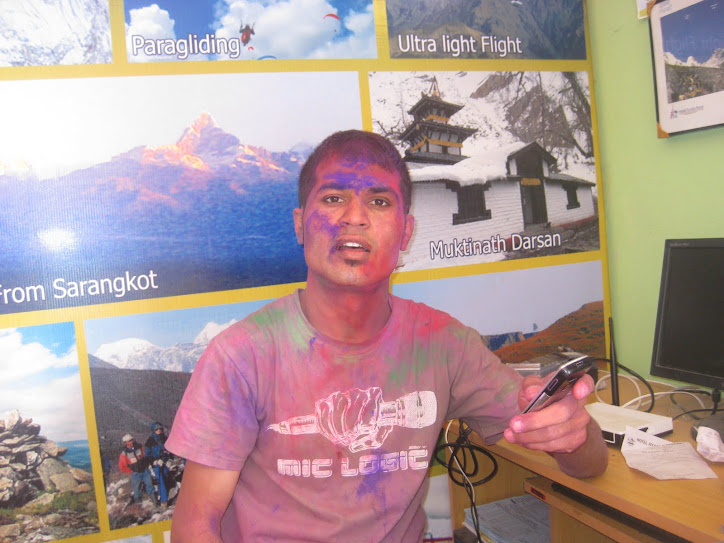








































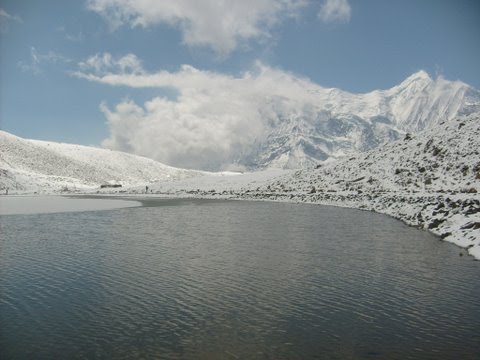
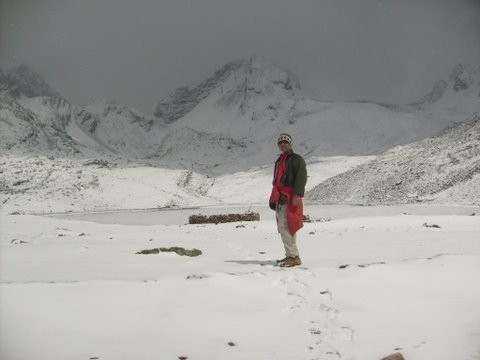
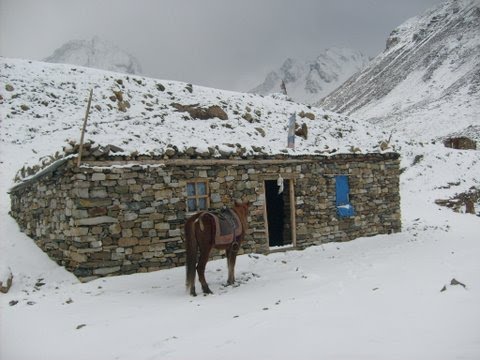
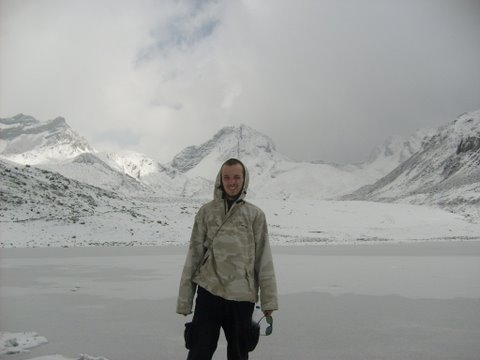
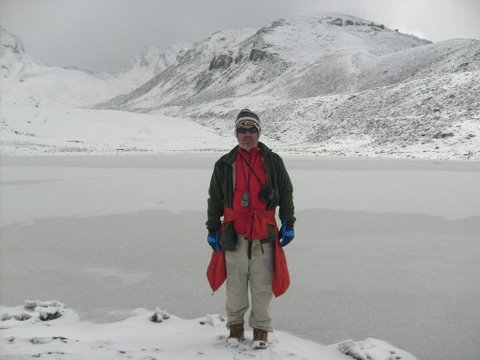
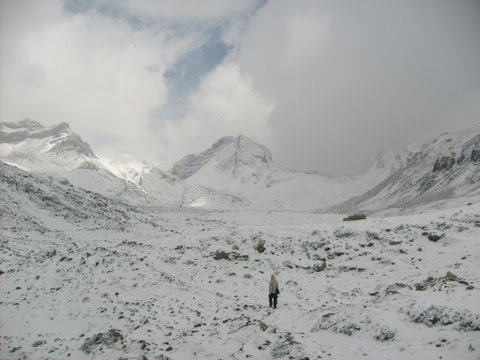
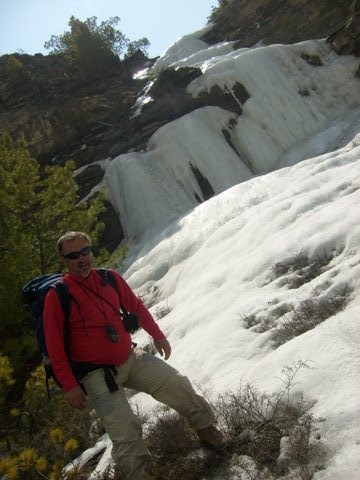
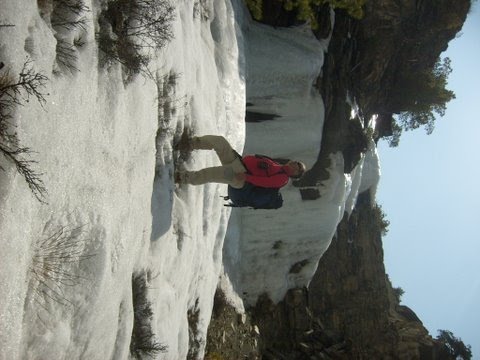
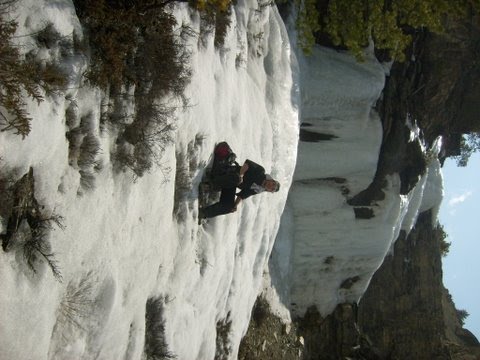
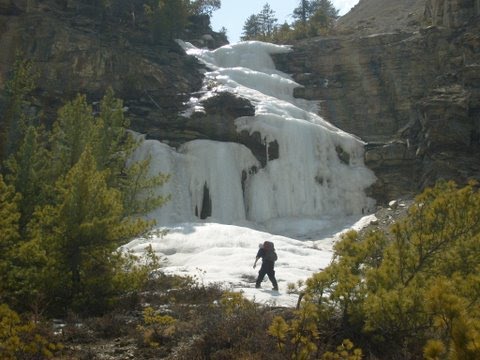
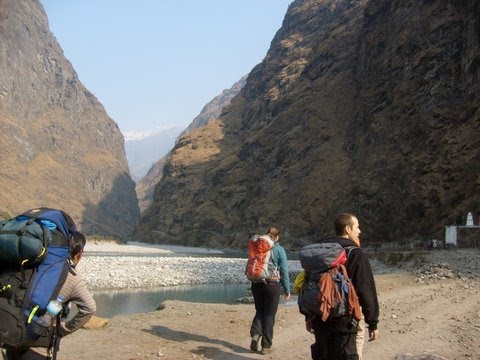



































































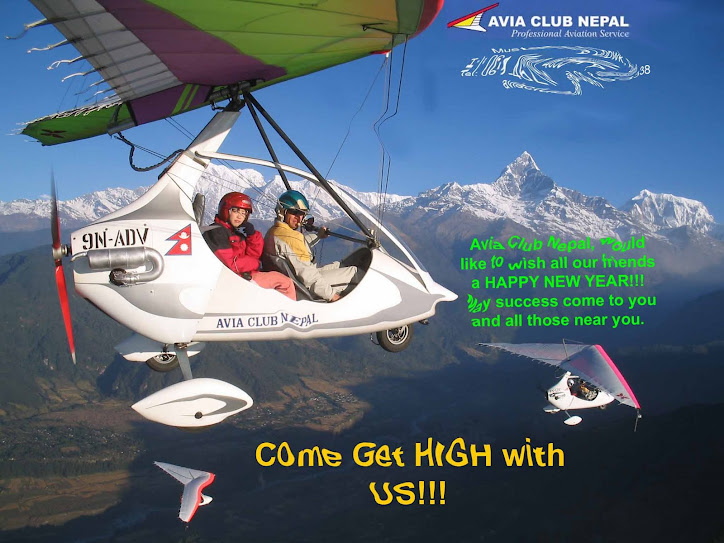
















No comments:
Post a Comment